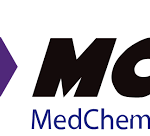Peptide 401-1 mg

Description
Peptide 401, a potent mast cell degranulating factor from bee venom, suppresses the increased vascular permeability due to intradermal injection of various smooth muscle spasmogens (histamine, and 5-HT).–80°C, 2 years; -20°C, 1 year (Powder, sealed storage, away from moisture)–Neuroscience-Neuromodulation–C110H192N40O24S4—-[1]Hanson JM, et al. Anti-inflammatory property of 401 (MCD-peptide), a peptide from the venom of the bee Apis mellifera (L.). Br J Pharmacol. 1974 Mar;50(3):383-92.|[2]Banks BE, et al. Anti-inflammatory activity of bee venom peptide 401 (mast cell degranulating peptide) andcompound 48/80 results from mast cell degranulation in vivo. Br J Pharmacol. 1990 Feb;99(2):350-4.–32908-73-9–2587.22–98.26–O=C(N[C@@H](CCCCN)C(N[C@@H](CSSC[C@@H](C(N[C@@H](CCCNC(N)=N)C(N[C@@H](CCCCN)C(N[C@H]1[C@@H](C)CC)=O)=O)=O)NC2=O)C(N[C@@H](CC(N)=O)C(N[C@@H](CSSC[C@@H](C(NCC(N[C@@H](CCCCN)C(N[C@@H](CC(N)=O)C(O)=O)=O)=O)=O)NC1=O)C(N[C@@H](CCCCN)C(N[C@@H](CCCNC(N)=N)C(N[C@@H](CC3=CNC=N3)C(N[C@@H](C(C)C)C(N[C@@H]([C@@H](C)CC)C(N[C@@H](CCCCN)C(N4[C@@H](CCC4)C(N[C@@H](CC5=CNC=N5)C(N[C@H]2[C@@H](C)CC)=O)=O)=O)=O)=O)=O)=O)=O)=O)=O)=O)=O)[C@H]([C@@H](C)CCN)N–Inflammation/Immunology; Endocrinology–10 mM in H2O–5-HT Receptor;Histamine Receptor–5-HT Receptor;Histamine Receptor–GPCR/G Protein;Immunology/Inflammation;Neuronal Signaling–Peptides



 Did you check our products for animal nutrition?
Did you check our products for animal nutrition? 